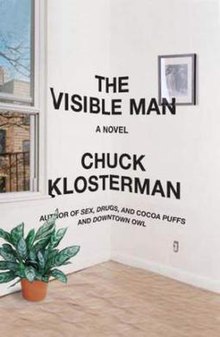
The Invisible Man is a science fiction novel by H. G. Wells. Originally serialised in Pearson's Weekly in 1897, it was published as a novel the same year. The Invisible Man to whom the title refers is Griffin, a scientist who has devoted himself to research into optics and who invents a way to change a body's refractive index to that of air so that it neither absorbs nor reflects light. He carries out this procedure on himself and renders himself invisible, but fails in his attempt to reverse it. A practitioner of random and irresponsible violence, Griffin has become an iconic character in horror fiction.
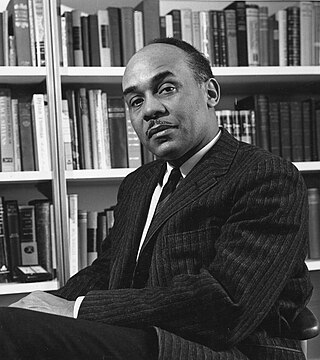
Ralph Ellison was an American writer, literary critic, and scholar best known for his novel Invisible Man, which won the National Book Award in 1953.

Charles Michael "Chuck" Palahniuk is an American novelist who describes his work as transgressional fiction. He has published 19 novels, three nonfiction books, two graphic novels, and two adult coloring books, as well as several short stories. His first published novel was Fight Club, which was adapted into a film of the same title.

Invisibility is the state of an object that cannot be seen. An object in this state is said to be invisible. The phenomenon is studied by physics and perceptual psychology.
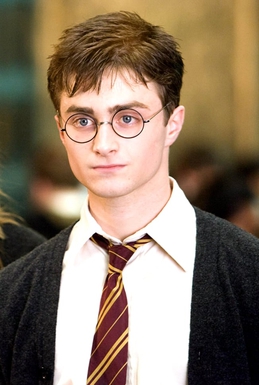
Harry James Potter is a fictional character and the titular protagonist in J. K. Rowling's series of eponymous novels. The majority of the books' plot covers seven years in the life of the orphan Harry, who, on his eleventh birthday, learns he is a wizard. Thus, he attends Hogwarts to practise magic under the guidance of the kindly headmaster Albus Dumbledore and other school professors along with his best friends Ron Weasley and Hermione Granger. Harry also discovers that he is already famous throughout the novel's magical community, and that his fate is tied with that of Lord Voldemort – the internationally feared Dark Wizard and murderer of his parents, James and Lily Potter. The book and film series revolve around Harry's struggle to adapt to the wizarding world and defeat Voldemort.

Blair Cornelia Waldorf is one of the main characters of Gossip Girl, introduced in the original series of novels and also appearing as the lead in the television adaptation; she also appears in the comic adaptation. Described as "a girl of extremes" by creator Cecily von Ziegesar, she is a New York City socialite and a comical overachiever who possesses both snobbish and sensitive sides. Due to her position as queen bee of Manhattan's social scene, Blair's actions and relations are under constant scrutiny from the mysterious Gossip Girl, a popular blogger.

Charles John Klosterman is an American author and essayist whose work focuses on American popular culture. He has been a columnist for Esquire and ESPN.com and wrote "The Ethicist" column for The New York Times Magazine. Klosterman is the author of twelve books, including two novels and the essay collection Sex, Drugs, and Cocoa Puffs: A Low Culture Manifesto. He was awarded the ASCAP Deems Taylor award for music criticism in 2002.
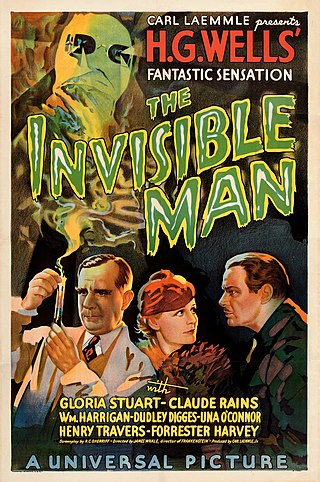
The Invisible Man is a 1933 American science fiction horror film directed by James Whale based on H. G. Wells' 1897 novel, The Invisible Man, produced by Universal Pictures, and starring Gloria Stuart, Claude Rains and William Harrigan. The film involves a Dr. Jack Griffin (Rains) who is covered in bandages and has his eyes obscured by dark glasses, the result of a secret experiment that makes him invisible, taking lodging in the village of Iping. Never leaving his quarters, the stranger demands that the staff leave him completely alone until his landlady and the villagers discover he is invisible. Griffin goes to the house of his colleague, Dr. Kemp and tells him of his plans to create a reign of terror. His fiancée Flora Cranley, the daughter of his employer Dr. Cranley, soon learn that Griffin's discovery has driven him insane, leading him to prove his superiority over other people by performing harmless pranks at first and eventually turning to murder.

Griffin, also known as the Invisible Man, is a fictional character who first appeared as the protagonist of H. G. Wells' 1897 science fiction novel The Invisible Man. In the original work, Griffin is a scientist whose research in optics and experiments into changing the human body's refractive index to that of air results in him becoming invisible. After becoming invisible, he wraps his head in bandages and dons a pair of goggles or glasses in order to enable others to see him. Unable to reverse the invisibility process, he descends into insanity and becomes a criminal.

The Gnome King of Oz (1927) is the twenty-first in the series of Oz books created by L. Frank Baum and his successors, and the seventh by Ruth Plumly Thompson. Like nineteen of the twenty previous books, it was illustrated by John R. Neill.
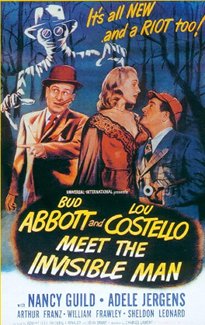
Abbott and Costello Meet the Invisible Man is a 1951 American science fiction comedy film directed by Charles Lamont and starring the team of Abbott and Costello alongside Nancy Guild.

Chuck Klosterman IV: A Decade of Curious People and Dangerous Ideas is a book written by Chuck Klosterman, first published by Scribner in 2006. It is the fourth book by Klosterman. The paperback edition was released in July 2007. The book consists of three sections: Things That Are True is a collection of previously published interviews with new introductions and footnotes; Things That Might Be True collects previously published opinion articles that include new footnotes and are preceded by hypothetical questions, a literary device Klosterman used in Sex, Drugs, and Cocoa Puffs: A Low Culture Manifesto; and Something That Isn't True At All is the beginning of an unfinished novel written in 2000. This final section is a departure for Klosterman, as it is his first published work of fiction. The main character, Jack, is allegedly based upon Klosterman's personality traits, but the author asserts that the events which occur in the story are completely fictional.
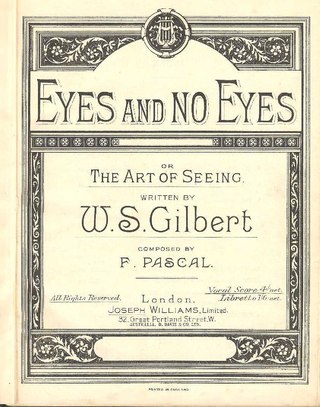
Eyes and No Eyes, or The Art of Seeing is a one-act musical entertainment with a libretto by W. S. Gilbert and music originally by Thomas German Reed. The story concerns two sisters who love flirtatious twin brothers. The sisters lose their uncle's wedding cloak. To avoid his anger, they persuade him that the cloak is magically visible only to true lovers and invisible to flirts.

A cloak of invisibility is an item that prevents the wearer from being seen. In folklore, mythology and fairy tales, a cloak of invisibility appears either as a magical item used by duplicitous characters or an item worn by a hero to fulfill a quest. It is a common theme in Welsh and Germanic folklore, and may originate with the cap of invisibility seen in ancient Greek myths. The motif falls under "D1361.12 magic cloak of invisibility" in the Stith Thompson motif index scheme.

Invisibility in fiction is a common plot device in stories, plays, films, animated works, video games, and other media, found in both the fantasy and science fiction genres. In fantasy, invisibility is often invoked and dismissed at will by a person, with a magic spell or potion, or a cloak, ring or other object. Alternatively, invisibility may be conferred on an unsuspecting person by a sorcerer, witch, or curse. In science fiction, invisibility is often conferred on the recipient as part of a complex technological or scientific process that is difficult or impossible to reverse, so that switching back and forth at frequent intervals is less likely to be depicted in science fiction. Depending on whether the science fiction is hard science fiction or soft science fiction, the depictions of invisibility may be more rooted in actual or plausible technologies, or more on the fictional or speculative end of the spectrum.

Memoirs of an Invisible Man is a 1987 science fiction novel by H. F. Saint.

Crossed is a young adult novel written by Allyson Braithwaite Condie. It is the sequel to Matched and the second book in the Matched trilogy, which concludes with Reached. Told in the alternating perspectives of Cassia and Ky, the novel is largely set in a desert canyon which was inspired by Condie's experience growing up in southern Utah. The plot follows Cassia and Ky's respective journeys to find each other again in the outer provinces as they begin to learn of a growing rebellion against the Society. Reception to the novel was mixed to positive and the novel reached The New York Times bestseller's list for children's chapter books.

I Wear the Black Hat: Grappling with Villains is a book written by Chuck Klosterman, first published by Scribner in 2013. It is a collection of twelve essays examining the nature of villainy through the lens of popular culture, rock music, and sports. It is the eighth book released by Klosterman. The book debuted at number 5 on the New York Times bestseller list.
"Laura" is a song written by Billy Joel that was first released on his 1982 album The Nylon Curtain.

But What If We're Wrong? Thinking About the Present As If It Were the Past is a 2016 non-fiction book by American author and essayist Chuck Klosterman.
